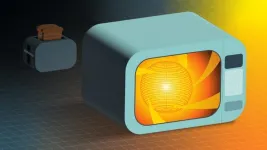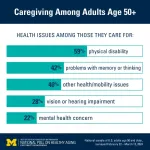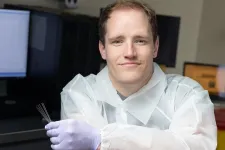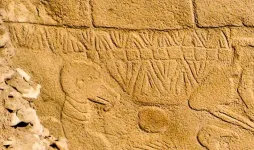(Press-News.org) Some believe the future of fusion in the U.S. lies in compact, spherical fusion vessels. A smaller tokamak, it is thought, could offer a more economical fusion option. The trick is squeezing everything into a small space. New research suggests eliminating one major component used to heat the plasma, freeing up much-needed space.
Scientists at the U.S. Department of Energy’s (DOE) Princeton Plasma Physics Laboratory (PPPL), the private company Tokamak Energy and Kyushu University in Japan have proposed a design for a compact, spherical fusion pilot plant that heats the plasma using only microwaves. Typically, spherical tokamaks also use a massive coil of copper wire called a solenoid, located near the center of the vessel, to heat the plasma. Neutral beam injection, which involves applying beams of uncharged particles to the plasma, is often used as well. But much like a tiny kitchen is easier to design if it has fewer appliances, it would be simpler and more economical to make a compact tokamak if it has fewer heating systems.
The new approach eliminates ohmic heating, which is the same heating that happens in a toaster and is standard in tokamaks. “A compact, spherical tokamak plasma looks like a cored apple with a relatively small core, so one does not have the space for an ohmic heating coil,” said Masayuki Ono, a principal research physicist at PPPL and lead author of the paper detailing the new research. “If we don’t have to include an ohmic heating coil, we can probably design a machine that is easier and cheaper to build.”
Identifying the ideal beam angle and heating mode
Microwaves are a form of electromagnetic radiation that can be generated using a device known as a gyrotron. The gyrotrons would sit on the outside of the tokamak — metaphorically speaking, just outside the apple skin — aimed toward the core. As the gyrotrons emitted powerful waves into the plasma, they would generate a current by moving negatively charged particles known as electrons. This process, known as electron cyclotron current drive (ECCD), both drives a current in and heats up the plasma. The heating process is not as simple as just turning on some gyrotrons, however. The researchers need to model different scenarios and determine various details, such as the best angle to aim the gyrotrons so the microwaves penetrate the plasma properly.
Using a computer code called TORAY coupled with one called TRANSP, the team scanned the aiming angles and saw what gave the highest efficiency. The goal is to use as little power as possible to drive the necessary current. “Also, you have to try to avoid any of the power that you’re putting into the plasma coming back out,” said Jack Berkery, a co-author on the paper and the deputy director of research for the National Spherical Torus Experiment-Upgrade (NSTX-U). This can happen when the microwaves are reflected off the plasma or when they enter the plasma but exit without changing the plasma’s current or temperature. “There were a lot of scans of different parameters to find the best solution,” Berkery said.
The research team also determined which mode of ECCD would work best for each phase of the heating process. There are two modes: ordinary mode, known as O mode, and extraordinary mode, known as X mode. The researchers see X mode as the best fit for ramping up the temperature and current of the plasma, while O mode is the best choice after the ramp-up, when the plasma temperature and current simply need to be maintained.
“O mode is good for a high-temperature, high-density plasma. But we found that O mode efficiency becomes very poor at lower temperatures, so you need something else to take care of the low-temperature regime,” said Ono.
Considering the impact of impurities
The authors, including postdoctoral researcher Kajal Shah, also investigated how power would radiate away from the plasma. Such radiation could be significant in a plasma as big as one needed for commercial fusion. Luis Delgado-Aparicio, the Lab’s head of the Advanced Projects Department and a co-author on the paper, notes that it will be particularly important to minimize the number of impurities from elements with a high atomic number, which is also known as a Z number, in the periodic table. Those are the elements with many positively charged particles, known as protons. The more protons an element has, the higher its Z number and the more it can contribute to heat loss. Tungsten and molybdenum, for example, have Z numbers, so their use inside a compact spherical tokamak would need to be carefully considered with an eye toward running the reactor in ways that would reduce impurity transfer into the plasma.
While the strong magnetic fields largely confine the plasma inside a tokamak in a particular shape, sometimes plasma can come close to the interior walls of the tokamak. “When this happens, atoms from the walls can sputter off and enter the plasma, cooling it,” said Delgado-Aparicio. “Even a relatively small amount of an element with a high Z number can cause the temperature of the plasma to cool significantly.” So, it is particularly important to keep impurities out of the plasma — as much as possible — particularly while the temperature is still ramping up.
Private-public partnerships: The future of fusion
The heating simulations are part of a design project known as the Spherical Tokamak Advanced Reactor or STAR. The project is a strategic initiative to develop plans for a pilot power plant. Berkery said the project provides PPPL researchers with an opportunity to apply their expertise in physics, engineering and working with the computer codes for fusion simulations while working in partnership with private firms on their plans for fusion power plants with a spherical tokamak design.
Vladimir Shevchenko, a co-author on the paper and a senior technical adviser at Tokamak Energy, said he plans to run experiments at the end of next year in the company’s fusion vessel, ST40, to compare to the simulation results presented in the paper. “Other heating systems have very, very serious problems,” Shevchenko said. “I see this as the future for tokamak heating systems.”
Shevchenko thinks the project benefits from the public-private partnership between PPPL and Tokamak Energy, one of the companies selected for the DOE milestone-based fusion development program. “PPPL has a lot of experienced specialists in different areas related to plasma physics and tokamak technologies. Their contribution in terms of modeling and advising is very valuable for a private company like Tokamak Energy,” he said.
Other PPPL researchers on this project include Nicola Bertelli, Syun’ichi Shiraiwa, Jon Menard and Álvaro Sánchez Villar. This research was completed with funding from the DOE under contract number DE-AC02-09CH11466.
PPPL is mastering the art of using plasma — the fourth state of matter — to solve some of the world's toughest science and technology challenges. Nestled on Princeton University’s Forrestal Campus in Plainsboro, New Jersey, our research ignites innovation in a range of applications including fusion energy, nanoscale fabrication, quantum materials and devices, and sustainability science. The University manages the Laboratory for the U.S. Department of Energy’s Office of Science, which is the nation’s single largest supporter of basic research in the physical sciences. Feel the heat at https://energy.gov/science and https://www.pppl.gov.
END
Heating for fusion: Why toast plasma when you can microwave it!
Carving a new path forward for compact fusion vessels
2024-08-06
ELSE PRESS RELEASES FROM THIS DATE:
Nudges fail to motivate vaccination
2024-08-06
One popular strategy to motivate people to get vaccinated is the nudge—a message designed to take advantage of human tendencies to conform to social norms, seek to protect loved ones or community, and to prefer treatments with high efficacy rates. Jiseon Chang and colleagues sought to assess the efficacy of such nudges in real world contexts during the COVID-19 pandemic. The authors paid for ads to appear on Facebook between October 2021 and January 2022, reaching almost 15 million users in Brazil, Russia, South Africa, Taiwan, ...
Caregiving: Poll reveals who’s providing care and who they’re caring for
2024-08-06
More than 1 in 4 people age 50 and older helps take care of at least one family member or friend who has a health problem or disability, a new poll finds.
And among those caregivers, the new results from the University of Michigan National Poll on Healthy Aging reveal a lot about who they are and who they’re caring for.
In all, 30% of all people in their 50s and early 60s provide care to at least one person with a health issue or disability, compared with 23% of people over 65. And 1 in 10 caregivers in their 50s and early 60s are juggling taking care of three or more people.
In ...
To predict tax revenue, look at corporate earnings
2024-08-06
To Predict Tax Revenue, Look at Corporate Earnings
States can make more accurate budget forecasts and avoid midyear cuts if they include growth in corporate earnings
AUSTIN, Texas -- In the complex task of building a state budget, much rides on the accuracy of its fiscal crystal ball: its forecast of how much tax revenue will come in to fund services during the year ahead. Forecasting errors have increased since 2001 due to revenue volatility, such as wider swings in personal income and consumer spending.
New research from Texas ...
New visual technique could advance early detection of neurodegenerative diseases
2024-08-06
MINNEAPOLIS / ST. PAUL (08/06/2024) — Researchers at the University of Minnesota, have developed a new visual diagnostic technique that can be used to advance early detection for neurodegenerative diseases like Parkinson's disease and similar diseases that affect animals, including Chronic Wasting Disease in deer.
The research is published in npj Biosensing, a peer-reviewed scientific journal published by Nature.
Named Cap-QuIC (Capillary-enhanced Quaking-Induced Conversion), researchers will now be able to distinguish infected samples with the naked eye, which makes testing ...
ALS diagnosis and survival linked to metals in blood, urine
2024-08-06
People with higher levels of metals found in their blood and urine may be more likely to be diagnosed with — and die from — amyotrophic lateral sclerosis, or ALS, a University of Michigan-led study suggests.
Researchers have known that ALS, a rare but fatal neurodegenerative condition, is influenced by genetic and environmental factors, including exposure to pesticides and metals.
This latest study examined the levels of metals in the blood and urine of people with and without ALS, finding that exposure to individual and mixtures of metals is associated with a greater risk for ALS and shorter survival.
The ...
Anxiety reframed can make business pitches more effective
2024-08-06
PULLMAN, Wash. – It may be possible to turn anxiety into a superpower in some scenarios, recent research with entrepreneurs indicates.
A Washington State University-led study found that if entrepreneurs preparing to make a funding pitch connected their pitch anxiety to their passion for their venture, judges ranked their performance higher. Perhaps even more importantly, the judges were also more likely to recommend them for funding.
This emotion reframing involved the entrepreneurs recognizing that they were feeling anxious partly because the project means so much to them. Entrepreneurs who tried other strategies ...
Study finds refined corn flour with added corn bran can lower cholesterol
2024-08-06
The findings of the randomized crossover clinical trial, available online now and slated to appear in an upcoming issue of the Journal of Nutrition, reveal simply swapping in foods made from refined corn flour + corn bran can lower LDL cholesterol concentrations by anywhere from 5% - 13.3% in just four weeks.
The trial compared the impact of whole-grain corn meal, refined corn meal, and a blend (refined corn meal plus corn bran) and found that 70% of the participants saw significant reductions in LDL cholesterol concentrations when consuming the blend. For the other corn flours, participants did not see a decrease in their LDL or total cholesterol ...
Carvings at ancient monument may be world’s oldest calendar
2024-08-06
Markings on a stone pillar at a 12,000 year-old archaeological site in Turkey likely represent the world’s oldest solar calendar, created as a memorial to a devastating comet strike, experts suggest.
The markings at Göbekli Tepe in southern Turkey – an ancient complex of temple-like enclosures adorned with intricately carved symbols – could record an astronomical event that triggered a key shift in human civilisation, researchers say.
The research suggests ancient people were able to record their observations of the sun, moon and constellations in ...
Sport or snack? How our brain decides
2024-08-06
In brief:
The chemical messenger orexin and the orexin neurons in the brain mediate the decision between exercise and snacking. Researchers at ETH Zurich made this discovery in mice. The results are likely to be transferable to humans.
In the experiment, mice with a blocked orexin system opted more frequently for the milkshake offered them and less for exercise.
These results could help in researching and developing new strategies to promote physical activity in people.
Should I go and exercise, or would I rather go to the café ...
A new way of thinking about the economy could help protect the Amazon, and help its people thrive
2024-08-06
To protect the Amazon and support the wellbeing of its people, its economy needs to shift from environmentally harmful production to a model built around the diversity of indigenous and rural communities, and standing forests.
A group of conservationists from Bolivia, Brazil, Peru, Ecuador, the US and the UK say that current conservation and development efforts will never sustain or scale without systemic changes in how economies are designed.
Despite extensive destruction of the Amazon in the name of economic development, Amazonian communities have seen little improvement in income, life expectancy, and education. The researchers have ...
LAST 30 PRESS RELEASES:
Numbers in our sights affect how we perceive space
SIMJ announces global collaborative book project in commemoration of its 75th anniversary
Air pollution exposure and birth weight
Obstructive sleep apnea risk and mental health conditions among older adults
How talking slows eye movements behind the wheel
The Ceramic Society of Japan’s Oxoate Ceramics Research Association launches new international book project
Heart-brain connection: international study reveals the role of the vagus nerve in keeping the heart young
Researchers identify Rb1 as a predictive biomarker for a new therapeutic strategy in some breast cancers
Survey reveals ethical gaps slowing AI adoption in pediatric surgery
Stimulant ADHD medications work differently than thought
AI overestimates how smart people are, according to HSE economists
HSE researchers create genome-wide map of quadruplexes
Scientists boost cell "powerhouses" to burn more calories
Automatic label checking: The missing step in making reliable medical AI
Low daily alcohol intake linked to 50% heightened mouth cancer risk in India
American Meteorological Society announces Rick Spinrad as 2026 President-Elect
Biomass-based carbon capture spotlighted in newly released global climate webinar recording
Illuminating invisible nano pollutants: advanced bioimaging tracks the full journey of emerging nanoscale contaminants in living systems
How does age affect recovery from spinal cord injury?
Novel AI tool offers prognosis for patients with head and neck cancer
Fathers’ microplastic exposure tied to their children’s metabolic problems
Research validates laboratory model for studying high-grade serous ovarian cancer
SIR 2026 delivers transformative breakthroughs in minimally invasive medicine to improve patient care
Stem Cell Reports most downloaded papers of 2025 highlight the breadth and impact of stem cell research
Oxford-led study estimates NHS spends around 3% of its primary and secondary care budget on the health impacts of heat and cold in England
A researcher’s long quest leads to a smart composite breakthrough
Urban wild bees act as “microbial sensors” of city health.
New study finds where you live affects recovery after a hip fracture
Forecasting the impact of fully automated vehicle adoption on US road traffic injuries
Alcohol-related hospitalizations from 2016 to 2022
[Press-News.org] Heating for fusion: Why toast plasma when you can microwave it!Carving a new path forward for compact fusion vessels




